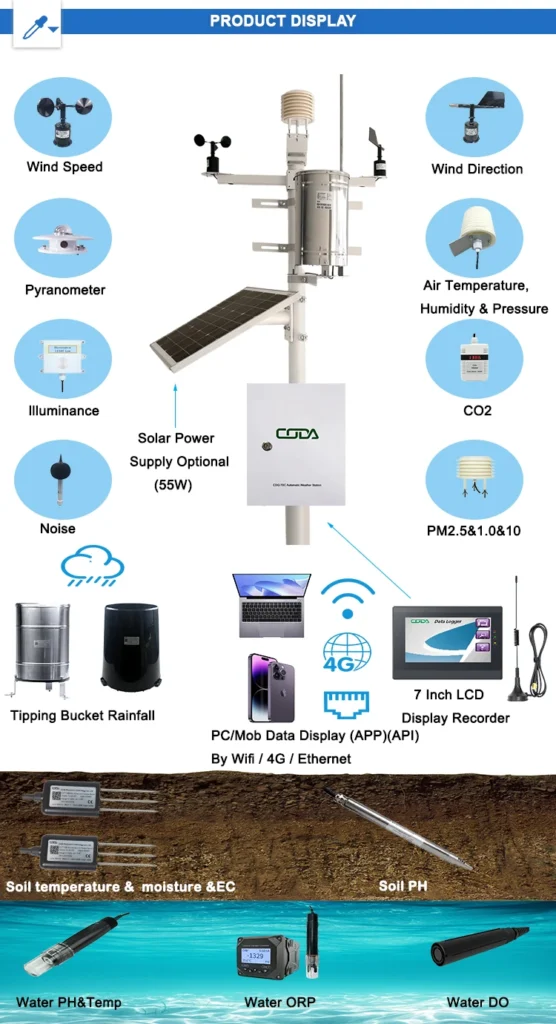What Essential Weather Instruments Should Be Onboard?
Sailing on the open seas needs careful focus on safety and efficiency. You can reach these goals with dependable weather tools. Having the right essential weather instruments on your boat is important. This helps you turn data into useful insights.
It doesn’t matter if you are a skilled sailor or just starting out. These tools help you find your way and make choices. They help make journeys smoother and safer in all conditions.
The Importance of Anemometers for Weather Monitoring at Sea
Anemometers measure how fast the wind blows. This is very important for sailing and navigating on the sea. Different models serve various conditions and provide specific benefits.
– Cup Anemometer: It is known for being easy to use and dependable. It works well when precision is not very important.
– Ultrasonic Anemometer: It is very accurate, which makes it great for handling rough or changing weather.
– Laser Anemometer: Provides accurate readings in all conditions. It is great for scientific research or detailed tracking.
Knowing the wind speed and direction ahead of time helps with planning. It also helps to stay away from dangerous areas.
Insights from a Barometer
A barometer measures the pressure of the air. It provides key details about changes in the weather. Here are the main options:
– Mercury Barometer: Reliable and traditionally designed, but delicate. It is suitable for occasional measurements.
– Aneroid Barometer: It is small and easy to carry. It is great for quick checks on the ocean.
– Digital Barometer: This tool shows live pressure readings and updates in graphs. It is perfect for making decisions in real-time.
Monitoring barometric pressure helps us predict the weather. This helps you get ready for storms or adapt to high-pressure systems.
Humidity Awareness with a Hygrometer
Keeping the right humidity levels on board is important for crew comfort and safe use of equipment. Types of hygrometers are:
– Hair-Tension Hygrometer: “Uses human hair to check humidity. This is a trusted and proven method.”
– Electrical Hygrometer: Uses capacitive sensors for stable and precise readings. This makes it great for daily use.
– Capacitive Hygrometer: Offers high sensitivity and precision for detailed measurements.
Keeping track of humidity helps avoid problems like electronic failures. It also supports the health of everyone on board.
Thermometer Usage for Temperature Monitoring
Temperature changes affect crew comfort and how well ship systems work. Common thermometer types are:
– Mercury-Based Thermometers: They are dependable, but they can also be risky. This makes them not the best choice for regular use.
– Alcohol-Based Thermometers: It is safe and accurate. It is good for regular checks.
– Digital Thermometers: “”Give clear readings with easy-to-read displays for better understanding.””
Keeping track of temperatures helps keep the crew safe. It helps operations run well and keeps the vessel’s parts safe.
The Role of GPS and Navigation Tools in Weather Tracking
GPS devices and navigation tools are not regular weather instruments. However, they are essential for analyzing weather conditions in real time. Examples include:
– GPS Devices: “Give accurate location data with live weather updates to help plan routes better.”
– Weather Apps: “Get real-time forecasts that help you change your plans quickly as conditions change.”
By using these tools along with traditional instruments, you get a wider view. This helps you make good choices.
Adding Value Through Non-Instrumental Factors
Experience and awareness of the environment are both important when looking at onboard conditions. For instance:
During a recent storm, Captain Sarah used her knowledge of past weather patterns and readings from instruments. This helped her see the changes coming. Her planning made sure her crew was ready, which led to an easy trip. Mixing manual observations with data insights builds a full safety framework.
Maintenance Tips to Keep Weather Instruments Reliable
Taking care of your tools helps them last longer and work better.
– Regular Calibration: Regularly adjust tools to keep them accurate.
– Store devices in dry places. Keep the temperature controlled to prevent damage.
– Troubleshooting: Get to know common problems and learn simple solutions.
Regular maintenance makes your equipment last longer. It also makes sure it works well when you need it most.
– Having reliable tools on your boat is important.
– Experience and good maintenance also play a key role.
– These factors help you move safely and confidently on open waters.
To make things safer and more efficient, we should use weather tools with other systems on the ship. Taking care of these tools keeps them reliable. This helps you find your way with confidence. Using advanced technology helps you prepare for any weather challenges.
Using good weather instruments and taking care of them helps make journeys on the water safer and smoother. Whether you are an experienced captain or a new sailor, being informed and prepared is key.
This helps you move through open waters with confidence. By following these guidelines, you can have a safe and effective trip. This will help you deal with different weather using the right gear.
